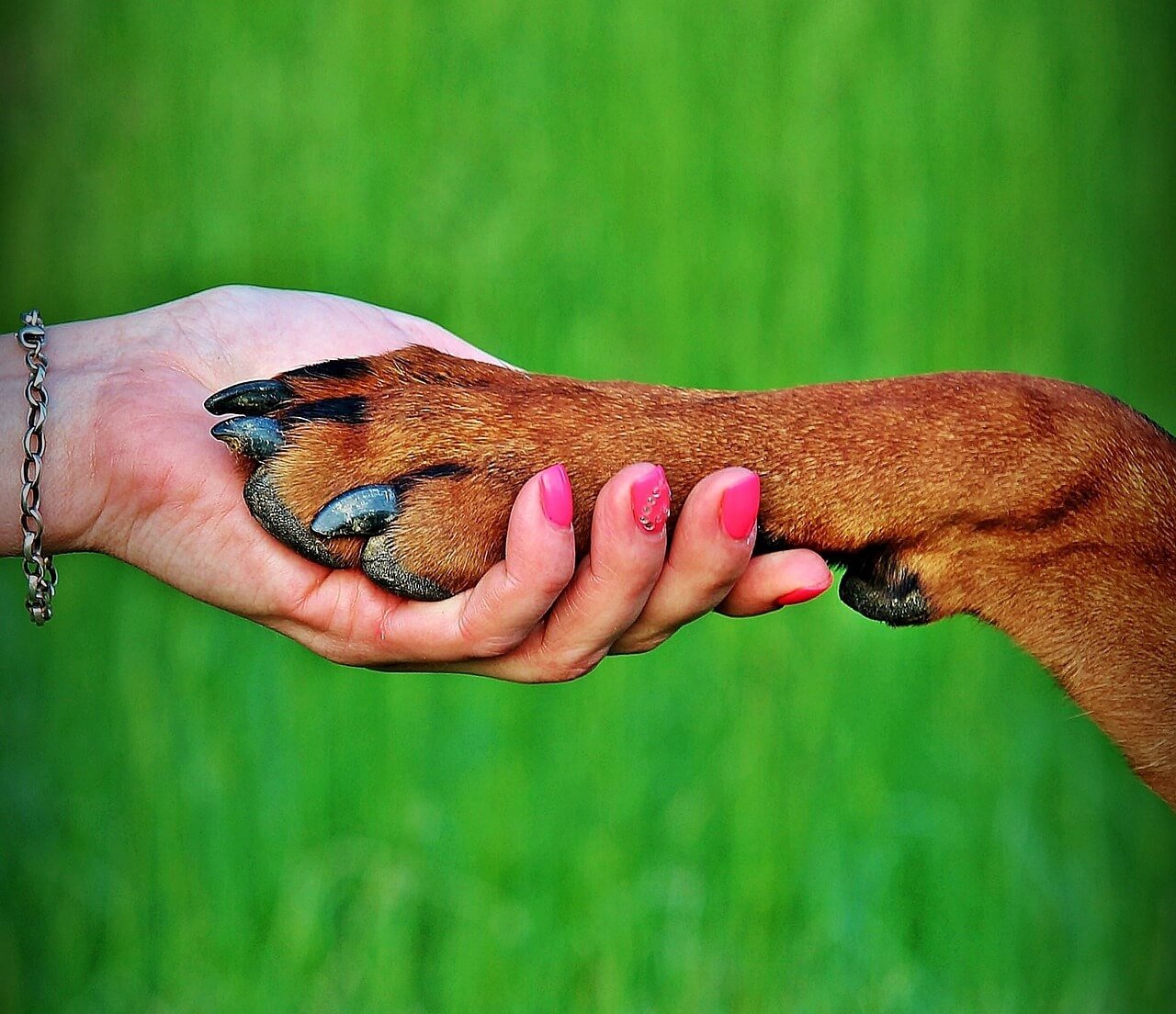Understanding the Intricacies of Dog Paw Anatomy
When we think about our beloved canine companions, their wagging tails and soulful eyes often steal the spotlight. However, there’s another part of their body that deserves just as much attention – their paws. These seemingly simple structures are actually marvels of evolution, perfectly designed to support your dog’s active lifestyle while providing essential functions like traction, shock absorption, and sensory feedback.
Whether you’re a curious pet owner or simply fascinated by the wonders of nature, understanding dog paw anatomy can deepen your appreciation for these remarkable animals. In this blog post, we’ll explore the fascinating components of a dog’s paw, how they function, and why they’re so crucial to your furry friend’s well-being.
The Building Blocks of a Dog’s Paw
A dog’s paw is more than just a cute feature; it’s a complex structure made up of several key components, each with a specific role to play. Let’s break down the anatomy of a dog’s paw to better understand its functionality.
Digital Pads:
These are the small, round pads located under each toe. They provide cushioning and help absorb shock during movement.Metacarpal/Metatarsal Pad:
This larger pad is situated in the center of the paw. It acts as the primary weight-bearing surface and offers additional support.Carpal Pad:
Found on the front legs above the paw, this small pad doesn’t touch the ground but aids in stability and braking during sudden stops.Claws (Nails):
Made of keratin, these serve multiple purposes, including digging, gripping surfaces, and even aiding in self-defense.Dewclaw:
Located slightly higher up on the leg, this thumb-like digit varies in prominence depending on the breed but can assist in gripping objects or navigating uneven terrain.
Understanding these components gives us insight into how dogs interact with their environment. Each part of the paw works together seamlessly to ensure mobility, comfort, and adaptability.
Key Functions of a Dog’s Paw
Beyond their structural complexity, a dog’s paws perform a variety of vital functions that contribute to their overall health and survival. Here’s a closer look at what makes these paws so indispensable.
Shock Absorption:
The thick pads on a dog’s paw act as natural shock absorbers, protecting joints and bones from impact during running or jumping.Traction and Grip:
The texture of the paw pads provides excellent grip on various surfaces, allowing dogs to navigate slippery or uneven terrain with ease.Temperature Regulation:
Paw pads contain sweat glands that help regulate body temperature, although most cooling occurs through panting.Sensory Perception:
Nerve endings in the paw pads allow dogs to feel vibrations, textures, and pressure, enhancing their awareness of their surroundings.Protection Against Injury:
Tough yet flexible, the paw pads shield sensitive tissues from sharp objects, hot surfaces, and harsh weather conditions.
These functions highlight the incredible versatility of a dog’s paw. Without them, dogs would struggle to perform many of the activities that define their daily lives.
Check this guide 👉Infected Swollen Spay Incisions in Dogs: Best 7 Health Tips!
Check this guide 👉Home Remedies for Dog Ear Infections: Best 7 Health Tips!
Check this guide 👉Top 5 Best Dog Nose Balms for Ultimate Snout Protection!

Component | Function |
|---|---|
Digital Pads | Provide cushioning and shock absorption |
Metacarpal/Metatarsal Pad | Acts as the main weight-bearing surface |
Carpal Pad | Aids in stability and braking |
Claws | Assist in digging, gripping, and defense |
Dewclaw | Helps with gripping and navigating rough areas |
Common Paw Problems in Dogs
While a dog’s paws are incredibly resilient, they’re not immune to issues. As a responsible pet owner, it’s important to be aware of potential problems that could affect your pup’s paws. Early detection and treatment can prevent complications and ensure your dog stays happy and healthy.
Cracked or Dry Pads:
Harsh weather, excessive walking on rough surfaces, or lack of hydration can lead to dry, cracked paw pads.Infections:
Bacteria or fungi can enter cuts or abrasions on the paw, causing infections that may require veterinary care.Foreign Objects:
Thorns, glass shards, or splinters lodged in the paw can cause discomfort and infection if not removed promptly.Allergies:
Some dogs develop allergies that manifest as irritated or inflamed paw pads, often accompanied by licking or chewing.Overgrown Nails:
Neglected nails can curl into the paw pad, leading to pain, difficulty walking, and potential infections.
By staying vigilant and addressing these issues early, you can keep your dog’s paws in top condition and avoid unnecessary suffering.
Tips for Maintaining Healthy Dog Paws
Taking care of your dog’s paws is an essential part of their overall grooming routine. With a few simple practices, you can help ensure their paws remain strong and healthy throughout their life.
Regular Inspections:
Check your dog’s paws frequently for signs of injury, swelling, or foreign objects embedded in the pads.Moisturize When Needed:
Use a pet-safe paw balm to keep the pads hydrated, especially during extreme weather conditions.Trim Nails Properly:
Keep your dog’s nails trimmed to a comfortable length, avoiding cutting into the quick, which can cause bleeding.Clean After Walks:
Wipe your dog’s paws after outdoor adventures to remove dirt, chemicals, or allergens that could irritate their skin.Protective Gear:
Consider using booties during winter months or hikes in rocky terrains to shield their paws from harm.
With consistent care and attention, you can prevent many common paw problems and give your dog the best chance at a comfortable, active life.
How Breed-Specific Traits Influence Paw Functionality
Not all dog paws are created equal. Depending on the breed, a dog’s paws may exhibit unique adaptations that suit their specific roles or environments. These variations highlight the versatility of paw anatomy across different breeds.
Webbed Feet for Swimmers:
Breeds like Labrador Retrievers and Newfoundlands have partially webbed feet, which enhance their swimming abilities by providing better propulsion in water.Compact Paws for Climbers:
Mountain breeds such as the Bernese Mountain Dog or Great Pyrenees often have compact, sturdy paws that provide stability on rocky or uneven terrain.Large Paws for Snow:
Northern breeds like Huskies and Malamutes possess larger-than-average paws that help distribute weight evenly, preventing them from sinking into snow.Slender Paws for Speed:
Sighthounds like Greyhounds and Whippets have elongated, slender paws that contribute to their incredible speed and agility.Thick Pads for Heat Resistance:
Desert-adapted breeds such as the Basenji or Afghan Hound have thicker paw pads to protect against hot sand and harsh ground surfaces.
These breed-specific adaptations demonstrate how a dog’s paws are finely tuned to meet the demands of their environment, showcasing nature’s incredible ability to tailor functionality to need.
How Weather Affects Paw Health
Just like humans, dogs face seasonal challenges that can impact the health and comfort of their paws. Understanding these risks can help you take proactive steps to protect your furry friend year-round.
Winter Hazards:
Ice, snow, and de-icing chemicals can cause irritation, frostbite, or cracks in the paw pads during colder months.Summer Heat:
Hot pavement or asphalt can burn sensitive paw pads, especially during peak daylight hours when temperatures soar.Rainy Conditions:
Wet weather increases the risk of fungal or bacterial infections due to prolonged moisture exposure.Dry Air in Winter:
Low humidity levels indoors and outdoors can lead to dry, cracked paw pads that require extra care.Allergens in Spring/Fall:
Pollen, grass, and other environmental allergens can irritate paws, causing excessive licking or chewing.
By recognizing these seasonal threats, you can implement preventive measures to keep your dog’s paws healthy and comfortable no matter the time of year.
Surprising Insights Into Canine Paw Anatomy
Dog paws are not only functional but also full of fascinating quirks that make them even more endearing. Here are some fun facts about your pup’s paws that might surprise you!
Paw Prints Are Unique:
Just like human fingerprints, every dog has a unique paw print pattern, making them one-of-a-kind.Paws Can “Sweat” Emotionally:
Dogs may leave sweaty paw prints when they’re nervous or excited, thanks to the sweat glands in their pads.Ticklish Paws:
Some dogs have ticklish paws and will pull away if you touch certain spots, similar to how humans react to being tickled.Color Variations:
Paw pad colors vary widely among breeds, ranging from black and brown to pink or speckled patterns.They Can Detect Vibration:
Nerve endings in the paws allow dogs to sense vibrations, helping them detect approaching animals or changes in their surroundings.
These intriguing tidbits remind us that there’s always something new to learn about our canine companions, and their paws are no exception. Next time you hold your dog’s paw, remember that it’s not just adorable – it’s also packed with personality and purpose.
Frequently Asked Questions About Dog Paw Anatomy
How many pads does a dog have on each paw?
Most dogs have five pads per paw: four digital pads, one large central pad, and sometimes a dewclaw.
Do dogs sweat through their paws?
Yes, dogs have sweat glands in their paw pads, but panting is their primary method of cooling down.
Can I use human lotion on my dog’s paws?
No, human lotions can irritate a dog’s skin. Always use products specifically formulated for pets.
Why does my dog lick their paws excessively?
Excessive licking may indicate allergies, irritation, or boredom. Consult a vet if this behavior persists.
Should I trim my dog’s dewclaws?
It depends on the breed and individual needs. Consult your veterinarian for personalized advice.
Celebrating the Marvel of Dog Paws
From their intricate anatomy to their multifunctional design, a dog’s paws truly are a testament to nature’s ingenuity. By understanding the unique features and functions of these remarkable structures, we gain a deeper appreciation for our four-legged friends and their ability to thrive in diverse environments.
Whether you’re tending to their needs, admiring their resilience, or simply enjoying a playful romp in the park, remember that every step your dog takes is supported by the incredible engineering of their paws. So next time you see those adorable little footprints, take a moment to marvel at the science behind them – because there’s far more to a dog’s paw than meets the eye.
Why Is My Cats Second Eyelid Showing? Best 7 Expert Tips! Understand causes, health signs, and how to respond when your cat’s third eyelid becomes visible.
How Do I Know If My Cat Died Peacefully? Best 7 Expert Tips! Discover the quiet signs of a peaceful feline passing and find comfort in their final moments.
Cat Allergy Eyes: Best 7 Expert Tips! Discover why your eyes react to cats and learn proven strategies for relief—without giving up your feline friend.
Why Do Abyssinian Cat Colors Matter? Best 7 Expert Tips! Discover the genetics, rare hues, and care secrets behind Abyssinian coat colors for a healthier, happier cat.





